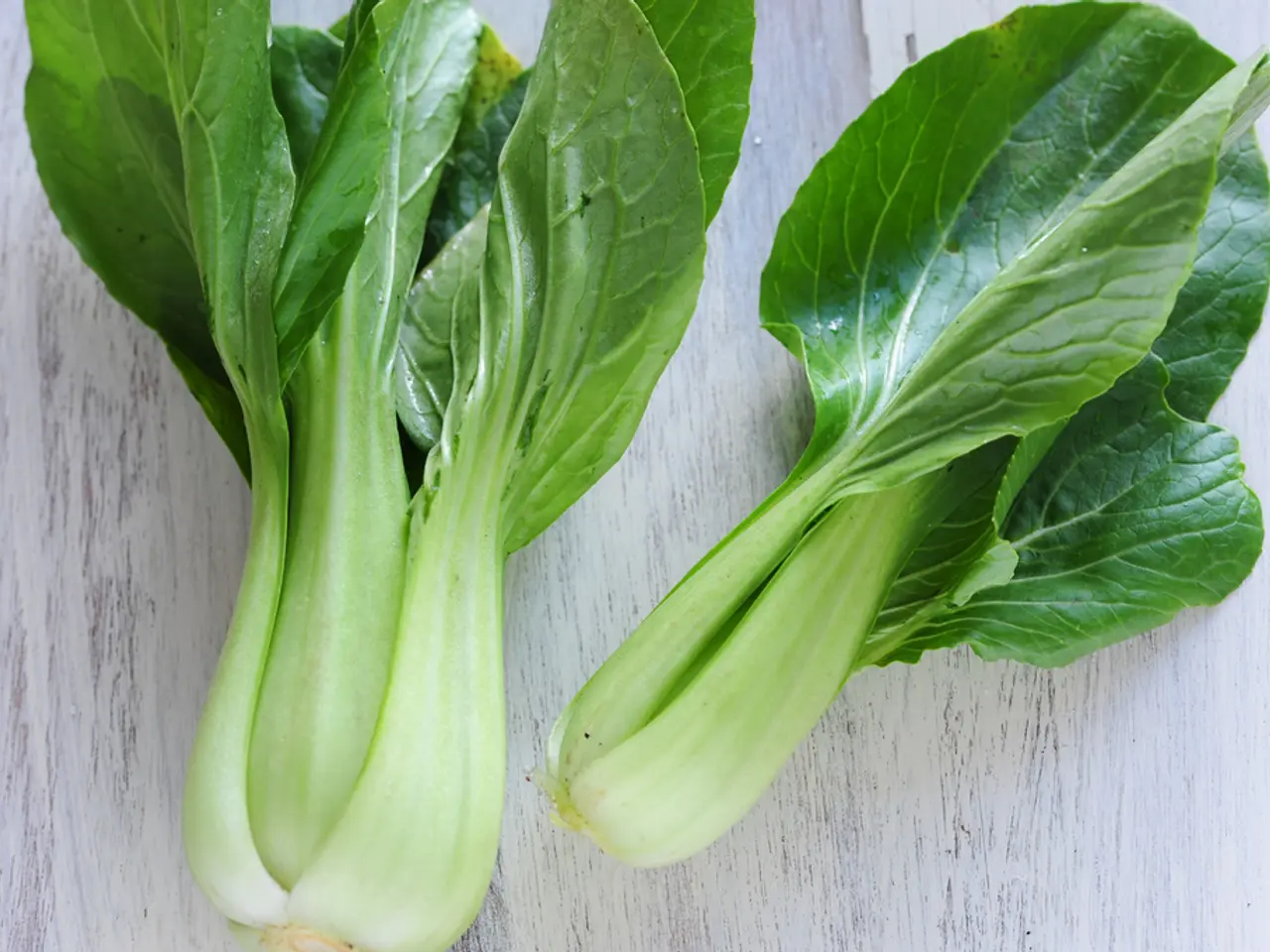Sowing Seeds Still Offers Opportunities for Growth
In the heart of summer, your garden can still thrive with the right choices and care. GrowVeg, a popular gardening resource, provides valuable insights on the best crops to plant during this season and how to care for them. Here are ten crops that are suitable for mid-summer planting, along with essential care tips to ensure a bountiful harvest.
- Zucchini Plant zucchini seeds directly in warm soil. Ensure at least 2 feet of space for each plant to prevent mildew and allow for adequate airflow. Keep the soil moist but not waterlogged, and provide full sun for optimal growth. Regularly harvest zucchini to encourage continuous production.
- Squash Like zucchini, squash thrives in warm conditions. Plant them in well-drained soil with rich organic matter. Water deeply and consistently, especially during flowering and fruiting. Mulch to retain moisture and suppress weeds.
- Beans Sow beans in warm soil directly. Provide support if growing pole beans. Water moderately but consistently once established. Beans fix nitrogen, improving soil fertility and benefiting future crops.
- Sweet Corn Plant sweet corn in fertile, well-draining soil with plenty of sunlight. Keep the soil evenly moist but avoid waterlogging. Corn needs space to grow and benefit from wind pollination, so plant in blocks rather than rows.
- Carrots Sow carrot seeds shallowly in loose, well-drained soil free of stones. Keep the soil consistently moist, especially during germination. Protect seed rows from intense sun by shading or covering with a plank to keep the soil cool and moist.
- Parsnips Like carrots, sow parsnips in deep, loose soil to avoid root deformities. Maintain consistent moisture, and use shading during very hot periods to improve germination and seedling success.
- Broccoli Plant starter seedlings or sow seeds for a late-season crop. Provide rich, well-drained soil. Keep the soil moist and protect from summer heat where possible, as broccoli prefers cooler temperatures.
- Celery Celery needs rich, consistently moist soil and some shade during the hottest part of the day. Mulch to retain moisture, and water regularly to prevent the stalks from becoming tough or bitter.
- Leeks Leeks are late starters and should be sown in pots or trays, then planted out once they're the thickness of a pencil.
- (Additional crops may include cucumbers, salad greens, bush beans, or summer squash varieties, as per GrowVeg’s broader recommendations)
General mid-summer planting care tips based on GrowVeg guidance include: - Protect young seedlings from intense midday sun by shading rows or using shade cloths to keep the soil cooler and moisture consistent. - Maintain consistent soil moisture, watering deeply but not excessively to avoid rot. - Fertilize mid-summer crops to supply nutrients during their rapid growth phases. - For crops like beans, use support structures if needed and ensure good air circulation to reduce disease.
- In the heart of summer, zucchini seeds can be planted directly in warm soil with enough space for each plant, and the soil should be kept moist, providing full sun for optimal growth. Regular harvesting is essential to encourage continuous production.
- Squash thrives in warm conditions just like zucchini and should be planted in well-drained soil with rich organic matter, receiving deep and consistent watering, especially during flowering and fruiting. Mulch can be added to retain moisture and suppress weeds.
- Beans can be sown directly in warm soil and can benefit from support structures if growing pole beans. Water moderately but consistently once established as they fix nitrogen, improving soil fertility for future crops.
- Sweet corn is best planted in fertile, well-draining soil with plenty of sunlight. It requires even moisture but avoid waterlogging and benefits from space for wind pollination when planted in blocks rather than rows.
- Carrots should be sown shallowly in loose, well-drained soil free of stones, keeping the soil consistently moist, especially during germination. Protect seed rows from intense sun by shading or covering with a plank.
- Parsnips should be sown in deep, loose soil similar to carrots to avoid root deformities. Keep the soil consistently moist and use shading during very hot periods to improve germination and seedling success.
- Broccoli can be planted as starter seedlings or sown for a late-season crop. It thrives in rich, well-drained soil, with moist soil and protection from summer heat where possible.
- Celery needs rich, consistently moist soil and some shade during the hottest part of the day. Apply mulch to retain moisture and water regularly to prevent the stalks from becoming tough or bitter.
- Leeks are late starters and should be sown in pots or trays, then planted out once they're the thickness of a pencil.
- During mid-summer planting, it's crucial to protect young seedlings from intense midday sun, maintain consistent soil moisture, fertilize mid-summer crops, and provide good air circulation to reduce disease for crops like beans.




